#Lille-Flandres
Text

Lesquin, aéroport de Lille.
33 notes
·
View notes
Text

Les couleurs de la ville.
#photographie urbaine#urban photography#couleurs urbaines#urban colors#minimalisme#minimalism#pont de flandres#59000#lille#nord#hauts de france#france#photographers on tumblr#poltredlyon#lyonurb#brumpicts#frédéric brumby
67 notes
·
View notes
Text

Lille Flandres railway station, France
#phoneography#mobiele telefoon fotografie#mobile phone photography#smartphoneography#smartphone fotografie#smartphone photography#Lille#Lille Flandres#Rijsel#France#Frankrijk#Frankreich#Francia#Europe#Europa#railway station#railway#spoor#sncf#travel#reizen#voyage#viajar#travel photography#reisfotografie#gare#station#Bahnhof#stazione#estacion
2 notes
·
View notes
Photo





Je reviens à mon projet de présenter la plupart de mes 55000 photos (nouveau compte approximatif. On se rapproche du présent !).
2015. A Lille, l’art contemporain était aussi avec ces anges sur leur petit nuage, à la Gare Lille Flandres : Lucy et Jorge Orta : “Meteoros”
La dernière photo : boulevard de la Liberté
#souvenirs#lille#art contemporain#nuage#ange#lucy & jorge orta#orta#meteoros#gare#gare lille flandres#boulevard de la liberté#art nouveau
7 notes
·
View notes
Text

En revenant en train de la gare de Lille Flandres
0 notes
Text

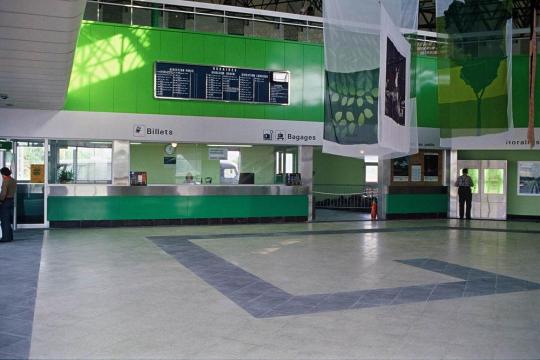
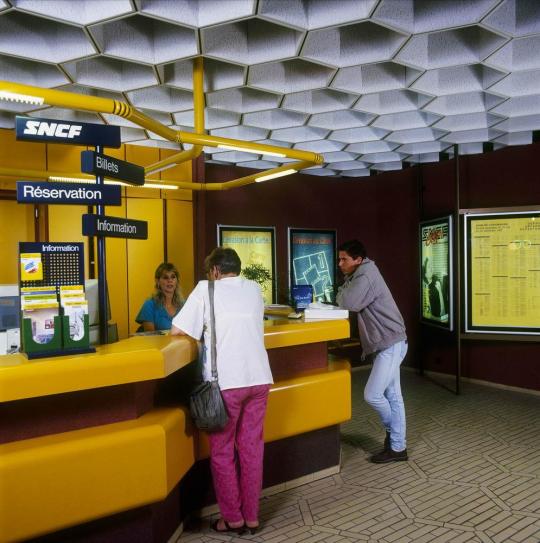
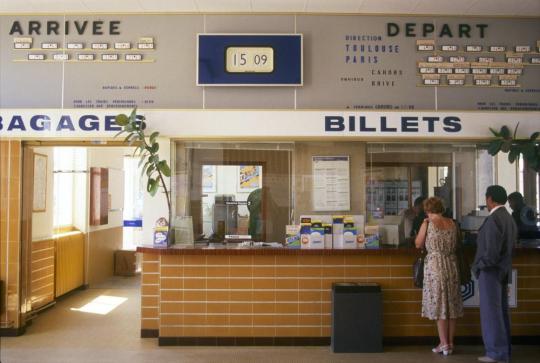
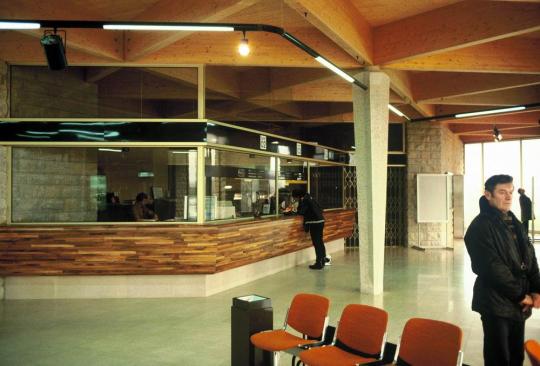




French Train Station interior
Lyon Perrache (1982)
Vaudreuil Ville Nouvelle (1978)
Strasbourg (1988)
Souillac (1984)
Macon (1982)
Paris Gare de Lyon Train Bleu (1982)
Marseille Saint Charles (1985)
Lille Flandres (1979)
Lyon Part-Dieu (1983)
Source : Sncf Open Archives
310 notes
·
View notes
Text

Façade de la Gare de Lille Flandres, 1907.
16 notes
·
View notes
Text
The Octave Day of the Sacred Heart, Notre-Dame de la Treille / Our Lady of the Trellis, France (1234), St Basil the Great and the Saints for 14 June
The Octave Day of the Sacred Heart
Notre-Dame de la Treille / Our Lady of the Trellis, Lille, Nord, Flandres, France (1234) – 14 June:HERE:https://anastpaul.com/2021/06/14/notre-dame-de-la-treille-our-lady-of-the-trellis-lille-nord-flandres-france-1234-and-memorials-of-the-saints-14-june/
St Basil the Great (329-379) Bishop of Caesarea, Confessor, Father and Doctor of the Church. From the 13th…

View On WordPress
7 notes
·
View notes
Text


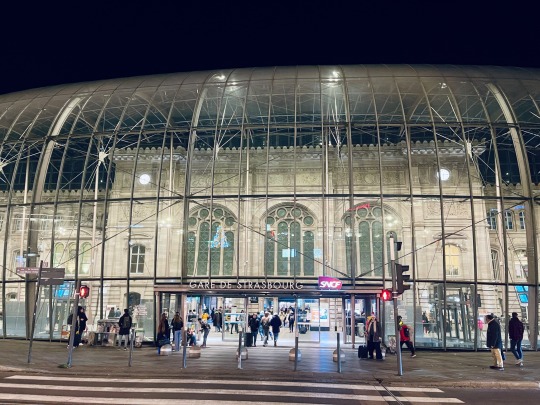
.
Just wanted to point out the Train Station in Strasbourg because I think it’s a beautiful building mixing the old and the new, or how to extended a building while preserving its original beauty.
Inaugurated in 1883 by the German administration of the time, the station is providing regional, national and international services and is the third busiest station in France (outside the Paris region), behind Lyon-Part-Dieu and Lille-Flandres. A major redevelopment of the station (and its forecourt), marked by the construction of a glass roof in front of the historic façade, was carried out as part of the commissioning of the TGV Est high-speed train in 2007.
7 notes
·
View notes
Note
Yo Marine,
Avec le brun que c'est devenu en France, je me résous à quitter Lille pour la Belgique prochainement. (Bruxelles)
Du coup, je voulais connaître un peu la météo qu'il y fait malgré le merdier fachiste dans lequel l'Europe se replonge. Est-ce que les Belges ont les reins solides pour esquiver la fièvre qui se propage ?
C'est comment dans la région de Bruxelles en termes de couleurs politiques ?
Non parce que chez nous, depuis le renforcement des nazis à l'hémicycle, ça devient encore plus invivable dans la société civile pour certains, même pour les happy fews qui sont préservés en temps normal.
Du coup bah, flemme de souffrir et de contribuer pour un pays de bouffons, je me dis que les Français ont choisi leur destin politique, et si ça consiste à motiver une partie d'entre eux à se casser, eh bien les infidélités avec mon voisin sont permises plus que jamais.
De ton point de vue, est-ce que la situation est préférable en termes d'hygiène politique ? Si tu ouvres ton troisième œil, est-ce que tu vois se profiler des flirts contre-nature avec des formations abjectes pour les prochaines années ?
Un état des lieux en provenance de l'intérieur est le bienvenu, merci peut-être pour ta coopération 🍟🤝🥖
tu choisis mal ton moment, on vient de voter à droite en juin
d'habitude les élections se passent comme ça: la Flandre vote (très) à droite alors que la Wallonie et Bruxelles votent à gauche
la Belgique détient le record de la formation la plus lente d'un gouvernement après des élections (541 jours lol) parce qu'il faut toujours réconcilier les tendances opposées entre nord et sud via des coalitions et négociations improbables
cette année est inhabituelle parce que la Wallonie et Bruxelles ont voté à droite aussi (c'est surtout Ecolo qui s'est pris une méga fessée, le PS n'a pas coulé)
la formation du gouvernement est toujours en cours mais elle ne devrait pas prendre très longtemps au vu de ces nouvelles affinités
précision: la droite francophone est similaire à la Macronie, elle est pro business sans être totalement tarée/réac non plus, et il n'y a pas d'extrême droite
en Flandre par contre l'extrême droite est #2 mais les autres partis ont toujours refusé de collaborer avec, y compris cette année
—
ceci étant dit il y a de grandes différences avec le fonctionnement français
déjà la Belgique est un état fédéral avec un pouvoir décentralisé, réparti entre les régions (l'enseignement par exemple n'est pas une compétence fédérale/nationale, les écoles flamandes et wallonnes fonctionnent différemment)
ensuite il n'y a jamais de majorité absolue, c'est toujours un jeu de coalitions, donc la situation actuelle française est 100% normale en Belgique, tout le monde doit mettre de l'eau dans son vin et faire des "compromis à la Belge"
ces deux points font qu'il y a moins cette dominance autoritaire d'un président ou d'un parti qu'il y a en France
4 notes
·
View notes
Text

Wattignies, agglomération de Lille.
La Mairie.
53 notes
·
View notes
Text

View from Gare Lille Flandres down Rue Faidherbe. Lille, France, March 2024.
cc @totally-france
5 notes
·
View notes
Text

TGV inOui Lille Flandres - Paris Nord
#phoneography#mobiele telefoon fotografie#mobile phone photography#smartphoneography#smartphone fotografie#smartphone photography#Lille#Rijsel#Lille Flandres#TGV#inOui#ouigo#France#Frankrijk#Frankreich#Francia#Europe#Europa#travel#reizen#voyage#reisen#viajar#sncf#TGV inoui#journey#reis#trip#gare
0 notes
Text
Extended endnotes for "The Countess, Destruction"
As I said in the Ao3 endnotes, I ran out of characters and had to cut them a bit short. So, here's the very extended version, all with links, citations, and pictures! (Please read the chapter first before reading the endnotes, of course.)
This chapter was also very much created with the help of Google Maps, Ciel's stink eye, and a bag of devil fruit fruit gum <3
Bridges and Walks
In 1846, Cloudia and Milton take a very long, very weird walk through the city. Mapping it was rather fun, though also a bit finicky because I had to check every bridge’s creation date. Blackfriars Bridge existed in 1846, as did Waterloo Bridge. But Hungerford Bridge and the Golden Jubilee Bridges, the bridges that come “next in line”? No! The former opened in 1864, the latter in 2002. Unfortunately (?), all the bridges between Westminster and Putney Bridge just did not exist in 1846, and that’s why their track looks like this:

(This leaves out their starting point somewhere in the Square Mile where the Salisbury Trading HQ is.)
It’s safe to say that they got one hell of a workout XD They stopped right by Hyde Park, and then, Milton surprised Cloudia by going in the direction of Kensington Palace (up; that empty square is where the palace is) and not back to where Holland House is. (Holland Park was constructed between 1860 and 1880, so I couldn’t use it as a pointer. Holland House is there where the park is though.) Cloudia, herself, went right towards Mayfair. Where Milton went? Well… that’s for another day (and year omg).

I picked Blackfriars Bridge as Cloudia’s favourite bridge because of its significance in The Infernal Devices (in which the protagonists fight against automatons, and all instalments are called Clockwork [Something] heh; that series is also set in the Victorian era, but in 1878). I also think the bridge is very pretty! Love that it is red and white; bridges should be more colourful in general.
I was in London in 2016 for a school trip and really wanted to go to that bridge. Sadly, we couldn’t move around on our own, and I didn’t have anyone willing to go with me. So, I only saw it from afar when we took a boat across the Thames.

(Very zoomed.)
The white-and-red metal bridge did not exist in 1846 anyway. Instead, Blackfriars Bridge was made of brownstone and looked like this:

(Painting from around 1800)
The first Blackfriars Bridge was dismantled in 1860 because it became just too wonky. Queen Victoria opened the second one in 1869. I would say that Vincent and Francis went to the opening in their mother’s stead.
(Extra: When I was in London, we walked beneath London Bridge, and I swear that the damn nursery rhyme’s melody started playing from somewhere! It was very weird.)
Additionally, while the first arc is named the “Inner London Murders Arc,” looking back, I’ve never specified where exactly the Salisbury Villa is located! As there were already attacks in Westminster, Camden, and Islington, I picked Kensington as the villa’s location. It was nice to very briefly revisit a location that was so important in the beginning and that doesn’t exist anymore.
Train Station
The Gare du Nord is the busiest train station in Europe and will soon be the largest train station in Europe too! In 1848, the train station was very busy too, but, by far, not large at all. It looked like this back then:

(Copperplate print from 1847)
It’s so tiny, isn’t it? In 1843, construction began, and two different designs for the train station were proposed. Of course, “management opted to construct the less spacious of the two options, despite the occurrence of stations serving capital city becoming overwhelmed already being a known phenomenon in both London and Brussels.” And that’s why the original Gare du Nord only existed from 1846 to 1860 (seriously, what were they thinking?). They partially demolished it to redo and expand it, and its front façade was transferred to the Lille-Flandres Station. Above is the back of the first Gare du Nord, and this was its front:

(Not that I even got to describe the front.)
1848 Paris
We had originally planned to do a trip to Paris next week, but it has been postponed until next year now. My father is still going next week for a business trip though. Unfortunately, I can’t possibly ask him to find some time to take the worst walk ever through the city with the Gare du Nord as the starting point and take some pictures for me. Thankfully, the chapter is told from the POVs of two characters who have never been in Paris before. They don’t know where they are, so I don’t need to either. Their journey through Paris is purposefully confusing and distorted anyway with all the detours they need to take because of the ongoing uprising. Even if the chapter had been from Barrington’s POV, he would have stopped caring about street names and landmarks at some point anyway; there are just too many other things to concentrate on – like side tables. (Milton, on the other hand, would have rattled down every single street name in his narration. And that’s one of the reasons why we don’t spend any time in his head. (Though this chapter from his POV would have certainly been very interesting...))
Nevertheless, I did consult Google Maps yet again for Cloudia, Cedric, and Milton’s chase through Paris and the others’ way to Cecelia’s house, though in much vaguer capacity than for the 1846 walk.
Cecelia lives in the current-day 7th arrondissement. It was the high nobility district from the 17th century until the French Revolution, and then again during the Bourbon Restauration before losing this status yet again in 1830. Unlike last time, it did remain “the centre of the French upper class’ social life” at least despite losing its political influence. That’s how Paris is divided into arrondissements nowadays:

In 1848, however, the division looked like this:

They changed the arrangement in 1859/60 upon expanding the city borders. As such, Cecelia’s house is somewhere in the 10th arrondissement in 1848, not in the 7th.
Google Maps’ recommended way from the Gare du Nord to the 7th arrondissement:

Newman, Aurèle, and Co. went more west first though and then south. (To keep them relatively safe and me sane.)
On Cloudia and Co.’s side, I looked up where the Hôtel de Ville, the Place du Panthéon, and the Place de la Bastille roughly lie in relation to the Gare du Nord (all are south/south-east to the station), as they are important locations in the uprising. While Cloudia and Co. aren’t exactly going anywhere specific, they are heading south in the worst way ever. (So that it’s easier for me to get them to Cecelia’s house later.) That’s about the path they took:

(I’m joking.)
As I said above, the path they’re taking is very, very messy, and neither Cloudia nor Cedric knows Paris anyway. They could make out the Notre-Dame or the Arc de Triomphe and such; that’s it. (That doesn’t help them though as they’re not going anywhere near any famous, well-known sights.) And because Paris most definitely changed a lot since 1848 anyway, I didn’t need to be super specific with anything anyway. Still, I didn’t want to make everything up, so I went searching on Google Maps for some interesting things they could have passed by.

And hello, church close to the station! I loved that it’s named Saint-Vincent-de-Paul and that it existed in 1848 too! (Was completed in 1844) The nearby square didn’t though (1862), and that’s why they pass by the church and nothingness with weeds (I have no idea what was actually in that place in 1848). I wanted to have them pass by the Montholon Square too as I saw that speck of green on the map, but it didn’t exist until 1862 too, so I dropped it. (That made me wonder if there are more squares/parks that were created in 1862? Anyway.) The church is the only actual thing on their way. Beyond it, all is made up.
June Days Uprising
The most difficult part to write. As I said in the Ao3 notes, I wanted to include an actual historical event into WotQ and I ultimately decided on the June Days Uprising. I live in Germany and only went to school here, and all we learn about French history in History class is Louis XIV and Louis XVI and the French Revolution. Because of this, I wasn’t really aware before I began planning this arc in 2018 that there was a lot of back and forth with France being a republic and a monarchy. E.g., the July Monarchy (start 1830) only just ended in February 1848 and France became a republic again. (And that merely lasted until 1852.)
Back in 2018, I went to a public library to look a few things up but couldn’t find much. I’ve been holding onto that note though, and it did give me a nice little timeline at least! The times were super helpful (start: 12 a.m. on the 23rd, end: 11 a.m. on the 26th); with that, I set out to make the first outline of Arc 4. (Unfortunately, I forgot to write down the book’s title then!)

When it became time to write Destruction, I couldn’t find a lot again, but two sites proved helpful.
With them and the Wikipedia article, I wrote Destruction’s first draft and finished the first revision round. Before I started the second, however, I remembered that I could just (mis)use my university library access to get more sources – and so I did! I found two books. A History of Modern France by Jeremy D. Popkin had a good little section on the Uprising, and Revolutionary Republicanism: Participation and Representation in 1848 France by Samuel Hayat is mostly about all that led to the revolution in February and what happened afterwards. I didn’t have time to read the entire book and only read the section that was just about the June Days Uprising (“Defending the Republic”). (And as Cloudia and Co. are thrown very suddenly into that situation and are also outsiders who are focused on many other things/their own problems, they couldn’t have known/didn’t keep up with everything that led to the June Days anyway.)
With that new knowledge, I rewrote a few things during the second revision. That ranged from adding details like women’s participation in the revolt and the distribution of posters to toning down everything a bit.
I read that “Blood ran in the streets, more even than in the 1830 Revolution” and "June 1848 had unleashed the most sanguinary fighting that had yet been seen on the streets of Paris" and assumed the fighting was at 100% basically from the start. But I also wondered how the insurgents could seize the entire eastern half of Paris within about half a day, considering who they were up against:

Even with the fact that Cavaignac “spent a day bringing in 30,000 regular troops from outside the city, while the rebels constructed their barricades,” that seemed odd to me. And then I read the insurgents were allowed to take the city, and it all made sense.

(From A History of Modern France)

(From Revolutionary Republicanism)
I reduced the number of soldiers and bodies the characters encounter as well as the overall destruction and fights a bit, cutting out sentences here and there, without making it too tame. It was still a messy, bloody fight, just not as much as it would become a few days later. I added Cloudia and Oscar’s conversation about the lone guard during the second revision too; I was sure they would notice that something was just off about the situation.
I also treated the June Days as a “rebellion of despair” first and then set out to correct it. I’ll just put pieces of Revolutionary Republicanism here instead of trying to explain it myself.




(Not that any of this is (much) evident in the chapter anyway.)
All in all, I hope I didn't mess up too much writing this aspect of the chapter.
Others
Rowan calls Oscar’s wife “Trudy Livingstone,” but she was only known as such socially. Trudy never legally took Oscar’s last name and kept her own.
The "star in the corner of the envelope" thing Milton tells Cloudia is something my old pen pal and I used to do! We were each other's only pen pals, but we still did this as a little secret "code." (She's the daughter of the person who inspired Milton's "phantom heart pain when it rains" btw!)
The picture I used for the cover is a map of Paris in 1800. (The site’s next-dated map is 1864. I didn’t look at any while writing the chapter as neither of them is close enough to 1848. They also aren’t easy to read…)
This is the final “running/fighting” chapter. The logistics of Nebulous/Mimes, Locomotive Run, Destruction gnawed at my energy a lot. I’m so happy to be done with them, omg. Now, the “Stuck in Paris” chapters begin! (The June Days last until the 26th, and it’s currently the 23rd. Leaving the city and returning to Nanteuil-la-Forêt isn't the easiest right now, especially with injured people!) No more moving around hectically for a while! Hurrah! (Cedric needs to get Cloudia through the city first, of course…)
#chapter notes#long chapter? check - long accompanying notes? check too#I'm very glad that I could insert all images without problems orz#(like isn't there a max?)#I'll also do a 'making of' for this chapter as I really do have some more progress notes to share!#this post here is mostly just background and some clarification#(I hope I haven't forgotten anything omg)#anyway - this is just a fanfiction...
3 notes
·
View notes
Text
Lille (59) : le migrant syrien sous OQTF avait 80.000 euros de drogue sur lui, ainsi que des objets volés
K. Z., syrien et sous obligation de quitter le territoire français, a été interpellé aux alentours de la gare de Lille Flandres en possession d’une quantité importante de drogue. Il avait aussi sur lui des objets volés.
Continue reading Lille (59) : le migrant syrien sous OQTF avait 80.000 euros de drogue sur lui, ainsi que des objets volés

View On WordPress
1 note
·
View note
Link
0 notes